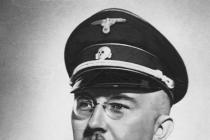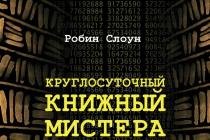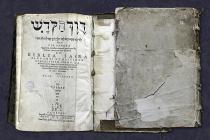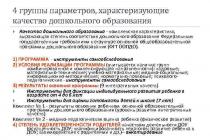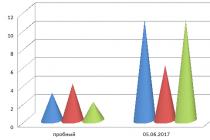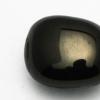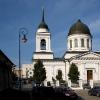Any stories associated with SS castles are shrouded in mysticism and mystery. And the lack of reliable information has given rise to the most fantastic versions and assumptions. It is believed, for example, that there were many such castles. In fact, only two castle buildings had a ritual character for the SS: Quedlinburg Cathedral and Wewelsburg Castle. After the war, rumors began to give Wewelsburg a bad reputation as a place where mysterious and even creepy stories take place. It turned into a place of pilgrimage for right-wing esotericists, who hoped to find here a “center of power” that would bestow, if not power, then at least exceptional talents and abilities. What are these rumors based on and what is behind them - read in the book of a recognized expert on the Third Reich, Andrei Vasilchenko.
A series: Ahnenerbe Archives
* * *
The given introductory fragment of the book Secrets of the black castles of the SS (A. V. Vasilchenko, 2010) provided by our book partner - the company liters.
© Vasilchenko A.V., 2010
© Veche Publishing House LLC, 2010
Preface
When they talk about the end of the Third Reich, they like to mention the “suicide club,” which is the joking name given to those party and government officials in Germany who chose to voluntarily die in the spring of 1945. Among them was Reichsführer SS Heinrich Himmler. By the way, many open questions remain regarding his death. Official historiography very readily reproduces the details of his suicide. Briefly they look like this.
Himmler, along with several close SS officers, tried to escape to Denmark, but was detained by an English patrol. For a long time he posed as a deserted soldier, but then revealed his true name and demanded a meeting with Marshal Montgomery. When he was refused, he swallowed an ampoule of potassium cyanide. It seems that everything is clear as day. But... Himmler was indeed detained in northern Germany, but not by the English, but by a Soviet patrol near the town of Luneburg. He was taken to the nearest English prisoner of war camp, where he committed suicide. The escape to Denmark version seems completely untenable, given that a few days earlier Himmler met with some SS officers in the town of Flesenburg, which lay directly on the Danish border. Denmark was just a stone's throw away, and from there it was easy to get to neutral Sweden. But the place where Himmler was detained indicates that for several days he stubbornly moved in the diametrically opposite direction - to the south.
Heinrich Himmler
Where he was going is unknown. One can only guess. If we draw a straight line between Flesenburg and Luneburg (that is, we try to restore Himmler’s path), we will find that this straight line leads us to the German city of Quedlinburg. There would be nothing remarkable in this fact if not for one circumstance. For many years, strange ceremonies were held at Quedlinburg Cathedral on July 2, which became known as the “Feast of Henry.” In this case, it was not about Heinrich Himmler, who led the celebration, but about the revered Henry I the Birdcatcher, whose remains were allegedly kept in the cathedral.
Let's go back to 1945. It can be assumed that Himmler did not try to escape at all and he went to the remains of Henry I the Birdcatcher. For what? Most likely, ask for advice. During Henry's holidays in Quedlinburg, high-ranking SS officers could observe a strange picture - the Reichsführer went down into the crypt to the remains of the king and remained there for a long time. Few knew that Himmler was able to speak with the spirit of his long-dead namesake. Or he thought he was able to talk. Here we can recall the words of Heinrich Himmler’s personal physician, Felix Kersten, who claimed that Himmler was guided by the advice that the Birdcatcher gave him. Now in this plot everything falls into place. Himmler could not get to Quedlinburg, and therefore revealed his name in the hope that the top Allied leadership would take him away from the camp, and for some reason he would end up next to the remains. When this plan failed, Himmler committed suicide. But not out of despair. It was a typical ritual suicide. There is plenty of mystery in this whole story.
In general, mystery and mysticism are distinctive features of those stories associated with SS castles. The majority of the public does not know the details of the history, and therefore it is assumed that there were many of these castles. In fact, of the castle buildings that had a ritual character for the SS, only two buildings can be distinguished: Wewelsburg Castle and Quedlinburg Cathedral. Thanks to the once very popular computer game “Castle Wolfenstein”, these two buildings were combined into one. They are often confused in the literature. All sorts of stories are written about them in the spirit of that same computer game, where the Ahnenerbe masters, experimenting with space and time, summon myriads of spirits, monsters and zombies.
Himmler heads to Quedlinburg Cathedral
Although such judgments have long ceased to be the lot of fiction and computer games. For example, in one of his books, the last master of the Order of the New Templars, Rudolf Mund, described a phenomenon - the inhabitants of a village at the foot of Wewelsburg were very different from the peasants from neighboring villages. He found only one explanation for this phenomenon: the Grail lived in their hearts. Or another example: the most sensitive people, when entering the Wewelsburg crypt, feel the presence of mysterious energy. The following fact has received active discussion on the verge of speculation: recently, blind lattice gates have been closing the crypt from the eyes of visitors. You can get there only with special permission. Some argue that this was done to better preserve the monument.
But some are sure that the real reason lies elsewhere. The authorities are afraid of the insights that might descend on the “transcendentally receptive” visitors to the castle. Even if in this case we are not talking about the Christian shrine, the cup that was present at the Last Supper and where the blood of Christ was collected, many Nazis spoke about the Grail of the “Black Sun,” which was able to internally change people thanks to its radiation. This object is best characterized by the ornament on the floor of Wewelsburg - a wheel from which lightning rays emanate. Their focus, the center of the mystical wheel, was the symbol of the Grail.
Here and there you can find references to the fact that in this SS complex work was carried out to overcome time, which could become the key to immortality and unlimited power. There were even eyewitnesses who claimed that Nazi developments in this direction were very successful. So, for example, in one of the esoteric books of recent times one can find information that the mystics gathered around “Himmler’s personal magician” (Karl Maria Wiligut) intended to activate in themselves exceptional abilities that had been lost by the ancient races. For them, Wiligut's mysterious reasonings were not empty words that should have inspired and bewitched Himmler. This was an instruction for action. It was for this purpose that Wiligut visited numerous burial sites and even tried to infuse himself with the souls of the dead.
Model of the castle, which is kept in the Wewelsburg Museum
Some “eyewitnesses” directly said that the SS men were trying to create a “time portal.” Moreover, the souls of dead soldiers were supposed to be lured here, where the most sensitive people were supposed to come into contact with them. In addition to Wewelsburg, lovers of sensations were attracted by the Böddeken estate, which “was, and perhaps still is, a center of secret research.” In this regard, there are frequent references to underground passages. This is what people meant when they spoke of numerous valuable documents, works of art and gold items collected at Wewelsburg from all over Europe that had “disappeared” and were never found. The collection of weapons found behind a false wall at Böddeken was, in the opinion of many, only a small fraction of what was brought to this estate at the end of the war. This has more than once prompted researchers to think that there were still secret shelters in this estate that have not yet been found, and perhaps even a kilometer-long passage that has existed since ancient times, which connected Böddeken and Wewelsburg.
Erzprior Rudolf Mund of the Order of the New Templars asserted in all seriousness that Weistor managed to step beyond the gates of death. In 1946, Himmler’s “personal magician” did not die at all, as stated on the death certificate. Many people saw him much later. Evidence from independent eyewitnesses was cited as evidence of this largely insane idea. Here is one of them: “In the late autumn of 1989, I left the Böddeken estate towards Wewelsburg at midnight. Having driven a few hundred meters from the village, I got into a very strange accident. My car suddenly stopped and caught fire. I had to walk to Wewelsburg. At one of the intersections I saw a white horse. On it sat a man dressed all in black, looking towards Wewelsburg. I asked him where he was going. The man turned around and said: “To Tibet, to my kingdom!” When the eyewitness was shown an album dedicated to the history of Wewelsburg, he immediately saw his night interlocutor. He was Karl Maria Wiligut." The existence of this tale allowed many supporters of SS esotericism to talk about the revival of Wiligut.
And this was far from the only story. Here’s another one: “You won’t believe the story my grandfather often told me. He and his grandmother were refugees and lived on the outskirts of Wewelsburg. Times were difficult then, and one day the grandfather, along with other men, went to Böddeken to pick apples there. While they were picking apples, they heard the clatter of hooves. The riders rode from Böddeken. Everyone thought that the peasants were guarding their apple trees, and therefore immediately hid in the nearest ditch. They clearly heard the sound of the hooves of a horse galloping past, but no one saw either the rider or the stallion. The frightened men ran back. This was around 1955."
Tomb of Karl Maria Wiligut
And here is another message: “We have the Böddeken monastery, where the boarding school is now located, near which my uncle lived for a long time. Things are happening in and around this building for which there is no rational explanation. And even if you now walk through the forests and meadows of Böddeken, you can see “something different” there. Even now, when I tell this, I get goosebumps.”
Strangely, in the short stretch between the Boeddeken estate and Wewelsburg Castle, numerous eyewitnesses spoke of mysterious phenomena. In esoteric circles in Germany, a version arose that in Böddeken the Nazis conducted experiments with time and space, and paranormal phenomena were just the result of these researches.
They say there is one interesting trend. In the last few decades, people who believe that they have “transcendental abilities” have begun to settle in its vicinity. As a result, housing prices in this rural area are significantly higher than in many German cities. This “migration” process suggests that they are again trying to turn Wewelsburg into an “occult center.” It was rumored that intelligence services from various countries had purchased houses in the vicinity of the castle. According to rumors, the CIA showed special interest in the castle.
We leave this and further information to the conscience of the authors of the cited books and articles. One of the German newspapers claimed, for example, that the CIA became interested in Wewelsburg at the instigation of President Eisenhower, who during the Second World War was the commander in chief of the US armed forces fighting on the continent. According to the same article, a document was found in the National Archives in Washington, DC, that had been hidden from the public and would remain top secret for decades to come. One nosy journalist was able to accidentally read it and take short notes. If such a document exists, it could cause a loud sensation. But, unfortunately, there is no way to either confirm or refute this fact. In basic terms, the contents of this “mystical” paper boil down to the following: the United States entered World War II mainly to capture Wewelsburg, where, in their opinion, the Nazis were carrying out developments that could make them invincible. Numerous American agents embedded in Masonic organizations warned the United States about such a danger. But after capturing the castle, American troops did not find anything there, since, apparently, the Germans managed to hide all the evidence of their new technologies. Such statements are very reminiscent of a newspaper canard, but, on the other hand, they are an excellent illustration of the fact that the public wants to see in Wewelsburg not just an SS castle, but a “cult building,” a place covered in a veil of secrecy.
American soldiers approach the bombed Wewelsburg
South wing and east tower with castle garden
If we talk about serious historical literature, most historical studies concerning the history of the Third Reich have emphasized that Wewelsburg Castle was of particular importance to Himmler. However, only in isolated cases were attempts made to understand what place this castle occupied in the structure of the SS, as well as to understand what significance it had for SS ideology. Since the beginning of the 50s of the twentieth century, references to Wewelsburg Castle began to appear in near-historical literature, which received a variety of characteristics: “SS monastery”, “order castle”, “Grail castle”, “cult place”, “Himmler’s Valhalla”, "center of the world" Until the end of the 80s, virtually no historian was able to lift the veil of secrecy that, since November 1935, at the behest of Himmler, had shrouded Wewelsburg Castle. The characterization of Himmler given by Willy Frischauer in the book “Heinrich Himmer - the Evil Genius of the Third Reich” portrayed the Reichsführer SS as a kind of source of energy from which Hitler, who was unable to give birth to a single independent idea, was supposedly “fed”. Such characteristics contributed to the formation of the image of Himmler in historical literature as a manifestation of absolute evil. In occult literature, Himmler was portrayed as a kind of “anti-man,” a “proto-double” of Hitler, “a gloomy creature born of horror and darkness.”
It was from occult literature that the idea came into historical research that Wewelsburg Castle and its “owner” Heinrich Himmler were a negative reflection of the legends of King Arthur’s Round Table. It was along this line that the head of the SS was associated with the legends of the Holy Grail and the spear of Longinus. Assumptions that Himmler was related to the notorious Thule Society gave rise to myths that it was on the orders of his secret leadership that the Reichsführer SS gave the order to carry out pseudoscientific research, which, they say, should have been applied in practice. It was in this vein that Himmler’s efforts to “Germanize” German history were interpreted, as well as his belief in reincarnation, the transmigration of souls. Inspired by mystical fantasies, many historians wrote that Himmler considered himself a new incarnation of either Henry the Lion or Henry I (the Birdcatcher). Such stories, mostly supplemented by myths and conjectures, still dominate pseudo-historical literature. However, this does not deny the very fact of Himmler’s belief in the transmigration of souls. Although this plot requires a separate consideration, detailed and balanced.
The book “Spear” by James Herbert, published in 1978 in London, added fuel to the fire. He proposed a new interpretation of the story of the “spear of fate,” which allegedly fell into the hands of Heinrich Himmler, and at the end of the war was transported to England. According to the author, it is still kept by a certain Mr. Grant, who “created a new Wewelsburg on the coast of North Devon.” The book offers a frankly fantastic interpretation of history. According to Herbert, Himmler escaped death in 1945. He moved with the precious relic to England, where, as the “New Parzival,” he presided over many occult meetings. According to the same author, Himmler “actually” died in 1967 from cancer. At the same time, the legendary Thule society did not cease to exist, and the “new Wewelsburg” continued the mission of the “old Wewelsburg” (located in Westphalia) to “establish a new sacred order.” The author was not shy about anti-Semitic statements, believing that the main task of the “new sacred order” was to protect the “spear of fate” so that it would not fall into the hands of the Jews. As we can see, this “historical” study was a mixture of cheap fiction and anti-Semitism.
A few years after the publication of the book “Spear,” a volume was published in New York called “Black Camelot.” Already from the title it is clear that the author of the book, Duncan Kyle, believed that Wewelsburg was a kind of projection of Camelot Castle, in which the “Knights of the Round Table” met, led by King Arthur. The book told a detective story about the intelligence confrontation during the Second World War, which ended with the destruction of Wewelsburg on Good Friday 1945. In this book, only an erudite historian could separate historical fact from fiction. The books mentioned above best characterize the fact that already in the early 1980s they were published in pocket format with soft covers, that is, they were considered pulp reading.
Heinrich Himmler speaks with Hermann Bartels. Karl Maria Wiligut is visible behind Bartels
However, it was not only cheap science fiction writers who paid attention to Wewelsburg. Gradually, this topic began to penetrate into historical literature. Until the early 80s, knowledge about Wewelsburg Castle was mainly limited to the inventions of the British and the unsubstantiated assertion of Willy Frischauer that Wewelsburg Castle was the “mystical headquarters of the SS order.” SS history researchers Heinz Höhne (“Order under the Sign of the Death’s Head”) and Heiner Lichtenstein (“Where Himmler sat”) agreed with this thesis. For them there was no doubt that Wewelsburg Castle was the spiritual center of the SS Order, and its creation was personally led by Heinrich Himmler. Höhne rightly pointed out that when choosing a castle, the Reichsführer was guided by an ancient German saga, which told about the battle in Westphalia near a birch grove.
The first study dedicated to Wewelsburg itself was published in 1982. It was then that the fundamental work of Professor Karl Hüser “Wewelsburg from 1933 to 1945” was published. A religious building and a place of terror.” For many years it was believed that the subject of Wewelsburg could be considered closed. However, in 1998, Stuart Russell and Jost Schneider published the book Heinrich Himmler's Castle, in which they expressed fundamental disagreement with the position of Professor Hüser. A decade later, a voluminous collection was published in Germany, entitled “SS, Himmler and Wewelsburg,” the compilers of which attempted to “secularize” the history of the SS castle, presenting it as one of the many SS institutions. This trend was understandable, since scientists tried to contrast their works with right-wing esoteric constructions, which found expression in the book “The Myth of the Black Sun” by Rudolf Mund and Gerhard von Werfenstein. Secrets of Wewelsburg. In order to understand the true purpose of this SS castle, it is necessary to turn to history.
Andrey Vyacheslavovich Vasilchenko
Secrets of the black SS castles
Ahnenerbe Archives
Preface
When they talk about the end of the Third Reich, they like to mention the “suicide club,” which is the joking name given to those party and government officials in Germany who chose to voluntarily die in the spring of 1945. Among them was Reichsführer SS Heinrich Himmler. By the way, many open questions remain regarding his death. Official historiography very readily reproduces the details of his suicide. Briefly they look like this.
Himmler, along with several close SS officers, tried to escape to Denmark, but was detained by an English patrol. For a long time he posed as a deserted soldier, but then revealed his true name and demanded a meeting with Marshal Montgomery. When he was refused, he swallowed an ampoule of potassium cyanide. It seems that everything is clear as day. But... Himmler was indeed detained in northern Germany, but not by the English, but by a Soviet patrol near the town of Luneburg. He was taken to the nearest English prisoner of war camp, where he committed suicide. The escape to Denmark version seems completely untenable, given that a few days earlier Himmler met with some SS officers in the town of Flesenburg, which lay directly on the Danish border. Denmark was just a stone's throw away, and from there it was easy to get to neutral Sweden. But the place where Himmler was detained indicates that for several days he stubbornly moved in the diametrically opposite direction - to the south.
Heinrich Himmler
Where he was going is unknown. One can only guess. If we draw a straight line between Flesenburg and Luneburg (that is, we try to restore Himmler’s path), we will find that this straight line leads us to the German city of Quedlinburg. There would be nothing remarkable in this fact if not for one circumstance. For many years, strange ceremonies were held at Quedlinburg Cathedral on July 2, which became known as the “Feast of Henry.” In this case, it was not about Heinrich Himmler, who led the celebration, but about the revered Henry I the Birdcatcher, whose remains were allegedly kept in the cathedral.
Let's go back to 1945. It can be assumed that Himmler did not try to escape at all and he went to the remains of Henry I the Birdcatcher. For what? Most likely, ask for advice. During Henry's holidays in Quedlinburg, high-ranking SS officers could observe a strange picture - the Reichsführer went down into the crypt to the remains of the king and remained there for a long time. Few knew that Himmler was able to speak with the spirit of his long-dead namesake. Or he thought he was able to talk. Here we can recall the words of Heinrich Himmler's personal physician Felix Kersten, who claimed that Himmler was guided by the advice that the Birdcatcher gave him. Now in this plot everything falls into place. Himmler could not get to Quedlinburg, and therefore revealed his name in the hope that the top Allied leadership would take him away from the camp, and for some reason he would end up next to the remains. When this plan failed, Himmler committed suicide. But not out of despair. It was a typical ritual suicide. There is plenty of mystery in this whole story.
In general, mystery and mysticism are distinctive features of those stories associated with SS castles. The majority of the public does not know the details of the history, and therefore it is assumed that there were many of these castles. In fact, of the castle buildings that had a ritual character for the SS, only two buildings can be distinguished: Wewelsburg Castle and Quedlinburg Cathedral. Thanks to the once very popular computer game “Castle Wolfenstein”, these two buildings were combined into one. They are often confused in the literature. All sorts of stories are written about them in the spirit of that same computer game, where the Ahnenerbe masters, experimenting with space and time, summon myriads of spirits, monsters and zombies.
Himmler heads to Quedlinburg Cathedral
Although such judgments have long ceased to be the lot of fiction and computer games. For example, in one of his books, the last master of the Order of the New Templars, Rudolf Mund, described a phenomenon - the inhabitants of a village at the foot of Wewelsburg were very different from the peasants from neighboring villages. He found only one explanation for this phenomenon: the Grail lived in their hearts. Or another example: the most sensitive people, when entering the Wewelsburg crypt, feel the presence of mysterious energy. The following fact has received active discussion on the verge of speculation: recently, blind lattice gates have been closing the crypt from the eyes of visitors. You can get there only with special permission. Some argue that this was done to better preserve the monument.
© Vasilchenko A.V., 2010
© Veche Publishing House LLC, 2010
Preface
When they talk about the end of the Third Reich, they like to mention the “suicide club,” which is the joking name given to those party and government officials in Germany who chose to voluntarily die in the spring of 1945. Among them was Reichsführer SS Heinrich Himmler. By the way, many open questions remain regarding his death. Official historiography very readily reproduces the details of his suicide. Briefly they look like this.
Himmler, along with several close SS officers, tried to escape to Denmark, but was detained by an English patrol. For a long time he posed as a deserted soldier, but then revealed his true name and demanded a meeting with Marshal Montgomery. When he was refused, he swallowed an ampoule of potassium cyanide. It seems that everything is clear as day. But... Himmler was indeed detained in northern Germany, but not by the English, but by a Soviet patrol near the town of Luneburg. He was taken to the nearest English prisoner of war camp, where he committed suicide. The escape to Denmark version seems completely untenable, given that a few days earlier Himmler met with some SS officers in the town of Flesenburg, which lay directly on the Danish border. Denmark was just a stone's throw away, and from there it was easy to get to neutral Sweden. But the place where Himmler was detained indicates that for several days he stubbornly moved in the diametrically opposite direction - to the south.

Heinrich Himmler
Where he was going is unknown. One can only guess. If we draw a straight line between Flesenburg and Luneburg (that is, we try to restore Himmler’s path), we will find that this straight line leads us to the German city of Quedlinburg. There would be nothing remarkable in this fact if not for one circumstance. For many years, strange ceremonies were held at Quedlinburg Cathedral on July 2, which became known as the “Feast of Henry.” In this case, it was not about Heinrich Himmler, who led the celebration, but about the revered Henry I the Birdcatcher, whose remains were allegedly kept in the cathedral.
Let's go back to 1945. It can be assumed that Himmler did not try to escape at all and he went to the remains of Henry I the Birdcatcher. For what? Most likely, ask for advice. During Henry's holidays in Quedlinburg, high-ranking SS officers could observe a strange picture - the Reichsführer went down into the crypt to the remains of the king and remained there for a long time. Few knew that Himmler was able to speak with the spirit of his long-dead namesake. Or he thought he was able to talk. Here we can recall the words of Heinrich Himmler's personal physician Felix Kersten, who claimed that Himmler was guided by the advice that the Birdcatcher gave him. Now in this plot everything falls into place. Himmler could not get to Quedlinburg, and therefore revealed his name in the hope that the top Allied leadership would take him away from the camp, and for some reason he would end up next to the remains. When this plan failed, Himmler committed suicide. But not out of despair. It was a typical ritual suicide. There is plenty of mystery in this whole story.
In general, mystery and mysticism are distinctive features of those stories associated with SS castles. The majority of the public does not know the details of the history, and therefore it is assumed that there were many of these castles. In fact, of the castle buildings that had a ritual character for the SS, only two buildings can be distinguished: Wewelsburg Castle and Quedlinburg Cathedral. Thanks to the once very popular computer game “Castle Wolfenstein”, these two buildings were combined into one. They are often confused in the literature. All sorts of stories are written about them in the spirit of that same computer game, where the Ahnenerbe masters, experimenting with space and time, summon myriads of spirits, monsters and zombies.

Himmler heads to Quedlinburg Cathedral
Although such judgments have long ceased to be the lot of fiction and computer games. For example, in one of his books, the last master of the Order of the New Templars, Rudolf Mund, described a phenomenon - the inhabitants of a village at the foot of Wewelsburg were very different from the peasants from neighboring villages. He found only one explanation for this phenomenon: the Grail lived in their hearts. Or another example: the most sensitive people, when entering the Wewelsburg crypt, feel the presence of mysterious energy. The following fact has received active discussion on the verge of speculation: recently, blind lattice gates have been closing the crypt from the eyes of visitors. You can get there only with special permission. Some argue that this was done to better preserve the monument.
But some are sure that the real reason lies elsewhere. The authorities are afraid of the insights that might descend on the “transcendentally receptive” visitors to the castle. Even if in this case we are not talking about the Christian shrine, the cup that was present at the Last Supper and where the blood of Christ was collected, many Nazis spoke about the Grail of the “Black Sun,” which was able to internally change people thanks to its radiation. This object is best characterized by the ornament on the floor of Wewelsburg - a wheel from which lightning rays emanate. Their focus, the center of the mystical wheel, was the symbol of the Grail.
Here and there you can find references to the fact that in this SS complex work was carried out to overcome time, which could become the key to immortality and unlimited power. There were even eyewitnesses who claimed that Nazi developments in this direction were very successful. So, for example, in one of the esoteric books of recent times one can find information that the mystics gathered around “Himmler’s personal magician” (Karl Maria Wiligut) intended to activate in themselves exceptional abilities that had been lost by the ancient races. For them, Wiligut's mysterious reasonings were not empty words that should have inspired and bewitched Himmler. This was an instruction for action. It was for this purpose that Wiligut visited numerous burial sites and even tried to infuse himself with the souls of the dead.

Model of the castle, which is kept in the Wewelsburg Museum
Some “eyewitnesses” directly said that the SS men were trying to create a “time portal.” Moreover, the souls of dead soldiers were supposed to be lured here, where the most sensitive people were supposed to come into contact with them. In addition to Wewelsburg, lovers of sensations were attracted by the Böddeken estate, which “was, and perhaps still is, a center of secret research.” In this regard, there are frequent references to underground passages. This is what people meant when they spoke of numerous valuable documents, works of art and gold items collected at Wewelsburg from all over Europe that had “disappeared” and were never found. The collection of weapons found behind a false wall at Böddeken was, in the opinion of many, only a small fraction of what was brought to this estate at the end of the war. This has more than once prompted researchers to think that there were still secret shelters in this estate that have not yet been found, and perhaps even a kilometer-long passage that has existed since ancient times, which connected Böddeken and Wewelsburg.
Erzprior Rudolf Mund of the Order of the New Templars asserted in all seriousness that Weistor managed to step beyond the gates of death. In 1946, Himmler’s “personal magician” did not die at all, as stated on the death certificate. Many people saw him much later. Evidence from independent eyewitnesses was cited as evidence of this largely insane idea. Here is one of them: “In the late autumn of 1989, I left the Böddeken estate towards Wewelsburg at midnight. Having driven a few hundred meters from the village, I got into a very strange accident. My car suddenly stopped and caught fire. I had to walk to Wewelsburg. At one of the intersections I saw a white horse. On it sat a man dressed all in black, looking towards Wewelsburg. I asked him where he was going. The man turned around and said: “To Tibet, to my kingdom!” When the eyewitness was shown an album dedicated to the history of Wewelsburg, he immediately saw his night interlocutor. He was Karl Maria Wiligut." The existence of this tale allowed many supporters of SS esotericism to talk about the revival of Wiligut.
And this was far from the only story. Here’s another one: “You won’t believe the story my grandfather often told me. He and his grandmother were refugees and lived on the outskirts of Wewelsburg. Times were difficult then, and one day the grandfather, along with other men, went to Böddeken to pick apples there. While they were picking apples, they heard the clatter of hooves. The riders rode from Böddeken. Everyone thought that the peasants were guarding their apple trees, and therefore immediately hid in the nearest ditch. They clearly heard the sound of the hooves of a horse galloping past, but no one saw either the rider or the stallion. The frightened men ran back. This was around 1955."

Tomb of Karl Maria Wiligut
And here is another message: “We have the Böddeken monastery, where the boarding school is now located, near which my uncle lived for a long time. Things are happening in and around this building for which there is no rational explanation. And even if you now walk through the forests and meadows of Böddeken, you can see “something different” there. Even now, when I tell this, I get goosebumps.”
Strangely, in the short stretch between the Boeddeken estate and Wewelsburg Castle, numerous eyewitnesses spoke of mysterious phenomena. In esoteric circles in Germany, a version arose that in Böddeken the Nazis conducted experiments with time and space, and paranormal phenomena were just the result of these researches.
They say there is one interesting trend. In the last few decades, people who believe that they have “transcendental abilities” have begun to settle in its vicinity. As a result, housing prices in this rural area are significantly higher than in many German cities. This “migration” process suggests that they are again trying to turn Wewelsburg into an “occult center.” It was rumored that intelligence services from various countries had purchased houses in the vicinity of the castle. According to rumors, the CIA showed special interest in the castle.
We leave this and further information to the conscience of the authors of the cited books and articles. One of the German newspapers claimed, for example, that the CIA became interested in Wewelsburg at the instigation of President Eisenhower, who during the Second World War was the commander in chief of the US armed forces fighting on the continent. According to the same article, a document was found in the National Archives in Washington, DC, that had been hidden from the public and would remain top secret for decades to come. One nosy journalist was able to accidentally read it and take short notes. If such a document exists, it could cause a loud sensation. But, unfortunately, there is no way to either confirm or refute this fact. In basic terms, the contents of this “mystical” paper boil down to the following: the United States entered World War II mainly to capture Wewelsburg, where, in their opinion, the Nazis were carrying out developments that could make them invincible. Numerous American agents embedded in Masonic organizations warned the United States about such a danger. But after capturing the castle, American troops did not find anything there, since, apparently, the Germans managed to hide all the evidence of their new technologies. Such statements are very reminiscent of a newspaper canard, but, on the other hand, they are an excellent illustration of the fact that the public wants to see in Wewelsburg not just an SS castle, but a “cult building,” a place covered in a veil of secrecy.

American soldiers approach the bombed Wewelsburg

South wing and east tower with castle garden
If we talk about serious historical literature, most historical studies concerning the history of the Third Reich have emphasized that Wewelsburg Castle was of particular importance to Himmler. However, only in isolated cases were attempts made to understand what place this castle occupied in the structure of the SS, as well as to understand what significance it had for SS ideology. Since the beginning of the 50s of the twentieth century, references to Wewelsburg Castle began to appear in near-historical literature, which received a variety of characteristics: “SS monastery”, “order castle”, “Grail castle”, “cult place”, “Himmler’s Valhalla”, "center of the world" Until the end of the 80s, virtually no historian was able to lift the veil of secrecy that, since November 1935, at the behest of Himmler, had shrouded Wewelsburg Castle. The characterization of Himmler given by Willy Frischauer in the book “Heinrich Himmer - the Evil Genius of the Third Reich” portrayed the Reichsführer SS as a kind of source of energy from which Hitler, who was unable to give birth to a single independent idea, was supposedly “fed”. Such characteristics contributed to the formation of the image of Himmler in historical literature as a manifestation of absolute evil. In occult literature, Himmler was portrayed as a kind of “anti-man,” a “proto-double” of Hitler, “a gloomy creature born of horror and darkness.”
It was from occult literature that the idea came into historical research that Wewelsburg Castle and its “owner” Heinrich Himmler were a negative reflection of the legends of King Arthur’s Round Table. It was along this line that the head of the SS was associated with the legends of the Holy Grail and the spear of Longinus. Assumptions that Himmler was related to the notorious Thule Society gave rise to myths that it was on the orders of his secret leadership that the Reichsführer SS gave the order to carry out pseudoscientific research, which, they say, should have been applied in practice. It was in this vein that Himmler’s efforts to “Germanize” German history were interpreted, as well as his belief in reincarnation, the transmigration of souls. Inspired by mystical fantasies, many historians wrote that Himmler considered himself a new incarnation of either Henry the Lion or Henry I (the Birdcatcher). Such stories, mostly supplemented by myths and conjectures, still dominate pseudo-historical literature. However, this does not deny the very fact of Himmler’s belief in the transmigration of souls. Although this plot requires a separate consideration, detailed and balanced.
The book “Spear” by James Herbert, published in 1978 in London, added fuel to the fire. He proposed a new interpretation of the story of the “spear of fate,” which allegedly fell into the hands of Heinrich Himmler, and at the end of the war was transported to England. According to the author, it is still kept by a certain Mr. Grant, who “created a new Wewelsburg on the coast of North Devon.” The book offers a frankly fantastic interpretation of history. According to Herbert, Himmler escaped death in 1945. He moved with the precious relic to England, where, as the “New Parzival,” he presided over many occult meetings. According to the same author, Himmler “actually” died in 1967 from cancer. At the same time, the legendary Thule society did not cease to exist, and the “new Wewelsburg” continued the mission of the “old Wewelsburg” (located in Westphalia) to “establish a new sacred order.” The author was not shy about anti-Semitic statements, believing that the main task of the “new sacred order” was to protect the “spear of fate” so that it would not fall into the hands of the Jews. As we can see, this “historical” study was a mixture of cheap fiction and anti-Semitism.
A few years after the publication of the book “Spear,” a volume was published in New York called “Black Camelot.” Already from the title it is clear that the author of the book, Duncan Kyle, believed that Wewelsburg was a kind of projection of Camelot Castle, in which the “Knights of the Round Table” met, led by King Arthur. The book told a detective story about the intelligence confrontation during the Second World War, which ended with the destruction of Wewelsburg on Good Friday 1945. In this book, only an erudite historian could separate historical fact from fiction. The books mentioned above best characterize the fact that already in the early 1980s they were published in pocket format with soft covers, that is, they were considered pulp reading.

Heinrich Himmler speaks with Hermann Bartels. Karl Maria Wiligut is visible behind Bartels
However, it was not only cheap science fiction writers who paid attention to Wewelsburg. Gradually, this topic began to penetrate into historical literature. Until the early 80s, knowledge about Wewelsburg Castle was mainly limited to the inventions of the British and the unsubstantiated assertion of Willy Frischauer that Wewelsburg Castle was the “mystical headquarters of the SS order.” SS history researchers Heinz Höhne (“Order under the Sign of the Death’s Head”) and Heiner Lichtenstein (“Where Himmler sat”) agreed with this thesis. For them there was no doubt that Wewelsburg Castle was the spiritual center of the SS Order, and its creation was personally led by Heinrich Himmler. Höhne rightly pointed out that when choosing a castle, the Reichsführer was guided by an ancient German saga, which told about the battle in Westphalia near a birch grove.
The first study dedicated to Wewelsburg itself was published in 1982. It was then that the fundamental work of Professor Karl Hüser “Wewelsburg from 1933 to 1945” was published. A religious building and a place of terror.” For many years it was believed that the subject of Wewelsburg could be considered closed. However, in 1998, Stuart Russell and Jost Schneider published the book Heinrich Himmler's Castle, in which they expressed fundamental disagreement with the position of Professor Hüser. A decade later, a voluminous collection was published in Germany, entitled “SS, Himmler and Wewelsburg,” the compilers of which attempted to “secularize” the history of the SS castle, presenting it as one of the many SS institutions. This trend was understandable, since scientists tried to contrast their works with right-wing esoteric constructions, which found expression in the book “The Myth of the Black Sun” by Rudolf Mund and Gerhard von Werfenstein. Secrets of Wewelsburg. In order to understand the true purpose of this SS castle, it is necessary to turn to history.
Chapter 1
Early history of the castle
Three-towered, built on a high hill in the Weser Renaissance style, Wewelsburg Castle has been considered a symbol of the Buren lands (Buren district) since the beginning of the 17th century. Archaeological excavations undertaken in 1924 in the vicinity of Wewelsburg confirmed the long-standing assumption that the triangular structure was erected on the site of the old Saxon castle of Wallburg. Finds taken from the ground, including fragments of ceramics, did not allow archaeologists to establish the exact date of construction of the first (Saxon) castle. However, for the SS ideologists this circumstance was not any serious obstacle. They firmly believed that the original castle was founded in 930, when Henry I fought defensive battles against the Hungarians, or Huns. This dating is indirectly confirmed by the first written tradition, which mentions Wewelsburg Castle. This document was written by an unknown German chronicler of the 12th century. The document itself was called "Annalista Saxo". It stated that in 1123, the power-hungry Count Friedrich von Arnsberg ordered the construction of a castle to begin on the site of the previously destroyed Wallburg. However, after the death of the count, rebel local peasants destroyed the unfinished castle. The next message that mentions Wewelsburg is dated 1301, that is, 177 years after the destruction of proto-Wewelsburg. This was a document that reported the purchase of Wewelsburg by the Bishop of Paderborn, Otto von Rietberg. The castle, or rather a stone house built on the site of a destroyed castle, was purchased from Count von Waldeck. For many centuries the castle was the property of the church, the Diocese of Paderborn. Only in 1589, after the castle had been mortgaged and remortgaged more than once by Archbishop Theodor von Furstenberg, did it finally become the property of the nobles von Buren and von Brenken. Only after this a new stone building was built next to the old stone house.

View of the southern wing of the castle from the northern tower (photo taken around 1900)
The castle acquired a shape resembling its current shape (triangle) in 1604–1607, when the victory over the “rebellious capital of Paderborn” was won. However, the three towers could not protect their inhabitants in 1646 from heavy Swedish guns. The restoration of the castle began only a few decades after the end of the Thirty Years' War. The three corner towers acquired a Baroque appearance in 1683.
Since the 18th century, the castle served as the second residence of the Paderborn bishops, the first being Neuhaus Castle. Over time, the castle began to be used as a building for the tax collector to live. When the surrounding lands became the property of Prussia in 1802, the castle was desolate. During the wars, the castle was partially destroyed. The peak of this destruction occurred on January 13, 1815, when lightning struck the north tower and caused a huge fire. After him, only stone walls two meters thick remained from the tower. Over the next hundred years, Prussia showed virtually no interest in this castle. The Prussian government tried to maintain order only its southern wing, which was closest to the village that bore the same name as the castle - Wewelsburg. In 1832, after lengthy negotiations, the castle was transferred to the use of a local priest. This was compensation from the state for the missing parsonage in Wewelsburg. After this, the castle was cared for by monks from the Böddeken Monastery. This lasted until secularization took place in Germany. But this did not mean that the German government and local authorities immediately began to restore the castle building. The roof over it was repaired only on the eve of the First World War, which only allowed its destruction to be stopped. However, the northern tower of the castle, the so-called Thick Tower, continued to be a formal ruin.
Life returned to Wewelsburg only in 1924. After many years of efforts to rationalize the use of the buildings, Dr. Vogel, a member of the Landrat of the district of Büren, reported to the regional government that Wewelsburg Castle could be used to organize youth events. At the same time, it was planned to conclude a long-term agreement with the Prussian government to rent the castle.

1630 engraving of Wewelsburg
Negotiations that took place from the end of January 1925 ended with the Prussian government transferring the castle not for rent, but for the ownership of local authorities. In addition to the right to ownership, the Buren district authorities also received monetary compensation in the amount of 10 thousand Reichsmarks, which were to be used to repair Wewelsburg. At the same time, the Prussian government reserved the right to use part of the castle (“to the same extent”) as an apartment for the local priest. In the future, local authorities were obliged to maintain the castle in accordance with the norms for the protection of historical monuments. In addition, all reconstruction, changes and expansions in the castle, as well as the acquisition of land on the slopes of the hill, had to be carried out only with the permission of the land government. These circumstances are important, if only because they played a significant role in the process of transferring the castle to the ownership of the SS, as well as during the redevelopment of Wewelsburg.

Drawing of the castle from the east side. Scale 1:600. Made in 1907

Drawing of the castle from the north side. Scale 1:600. Completed in 1907
Due to the fact that the local authorities of the Buren district had good connections with the land government, the restoration of the castle began much earlier than the castle itself was transferred into the ownership of the Landrat. The first work began in July 1924. First of all, it was planned to renew the gable roof of the castle, as well as free the castle basements from the garbage that had accumulated there over many years. It was planned that a local history museum would be located in the basements. In addition, in the winter of 1924–1925, in the dilapidated northern tower on the ground floor, which rose 10 meters above the basement level, a spacious hall was created for 500 people. There was also a stage set up there.

Local authorities did not take the matter of restoring the castle formally. In the summer of 1924, they initiated the creation of the “Union for the Preservation of Wewelsburg Castle”. This initiative found a lively response from local residents, who were ready to help restore the castle with money, things and their own labor. It was this circumstance that allowed the building to be put in order over the following years. Work to restore the castle progressed so quickly that the local history museum in its basement was opened on Trinity Sunday, May 31, 1925. Virtually the entire local population was present at this event. As the work progressed, it was decided to open a youth camp in the eastern wing, designed for 30 people. Subsequently, it was expanded several times. A few years later it could accommodate 100 people. In addition, in the same eastern wing an apartment was built for the castle guard. In the southwestern tower of the castle, as well as in part of the southern and western wings adjacent to it, a “non-alcoholic castle economy” was created - a kitchen, which was in charge of the watchman.


The western and eastern towers are in disrepair. Photo from 1920
After the global crisis broke out, the mood of the local population changed radically. Many believed that spending money on a castle was an unforgivable luxury. A similar opinion began to be expressed more and more often by representatives of local authorities. It was even proposed to completely suspend all work in Wewelsburg. In the summer of 1932, the regional parliament even refused to allocate a subsidy in the amount of 12 thousand marks, which should have been used for the conservation of the northern tower. The workers who carried out the restoration work had to contact Minden, the state government. As a result, the conditions for transferring ownership of the castle were specified, which presupposed its preservation as a historical monument.
In order to somehow pay off part of the costs of the current maintenance of the castle, at the end of 1932 the Landrat sent approximately 70 people from the Voluntary Labor Service to Wewelsburg. These were unemployed people who, as “emergency workers,” were supposed to lay lines of communication between Wewelsburg and Aden. Some time later, local authorities decided to expand this practice. On May 5, 1933, it was decided to use the vacant floor of the west wing as a Voluntary Labor Service camp, which was designed to house 214 people. At first, negotiations with the relevant regional authorities, in which the head of the Einhausen district administration took part, were quite successful. However, they failed when, in September 1933, district architect Breithaupt presented plans for redevelopment of the building.

View of the castle from the north tower. Photo from 1884
The last volunteer workers left the castle on September 14, 1933. It is significant that a week earlier an order came from Minden “regarding a forced labor camp.” The order stated: “There is no camp in the current area. Wewelsburg Castle could be used for this. Although there is a possibility that a school for management personnel will be located at Wewelsburg Castle. This issue will be finally resolved, most likely, by the spring of 1934.”
However, the issue was resolved much earlier than local authorities expected. On November 3, 1933, Heinrich Himmler visited the old castle. Despite the fact that this visit was largely accidental, the head of the SS immediately decided that the Imperial SS Leadership School would be located in Wewelsburg.
. “Himmler was firmly convinced that he could conjure spirits and communicate with them. Of course, he stated that for this you need to have special abilities. He claimed that he could call upon the spirits of people who had died more than 100 years ago... When he lay half asleep, the spirit of King Henry often appeared to him, giving valuable advice.”
Any stories associated with SS castles are shrouded in mysticism and mystery. And the lack of reliable information has given rise to the most fantastic versions and assumptions. It is believed, for example, that there were many such castles. In fact, only two castle buildings had a ritual character for the SS: Quedlinburg Cathedral and Wewelsburg Castle. After the war, rumors began to give Wewelsburg a bad reputation as a place where mysterious and even creepy stories take place. It turned into a place of pilgrimage for right-wing esotericists, who hoped to find here a “center of power” that would bestow, if not power, then at least exceptional talents and abilities.
What are these rumors based on and what is behind them - read in the book of a recognized expert on the Third Reich, Andrei Vasilchenko.
The work belongs to the History genre. Historical sciences. It was published in 2010 by the publishing house "VECHE". The book is part of the Ahnenerbe Archives series. On our website you can download the book "Secrets of the Black SS Castles" in fb2, rtf, epub, pdf, txt format or read online. Here, before reading, you can also turn to reviews from readers who are already familiar with the book and find out their opinion. In our partner's online store you can buy and read the book in paper form.
Andrey Vasilchenko
Secrets of the black SS castles
© Vasilchenko A.V., 2010
© Veche Publishing House LLC, 2010
Preface
When they talk about the end of the Third Reich, they like to mention the “suicide club,” which is the joking name given to those party and government officials in Germany who chose to voluntarily die in the spring of 1945. Among them was Reichsführer SS Heinrich Himmler. By the way, many open questions remain regarding his death. Official historiography very readily reproduces the details of his suicide. Briefly they look like this.
Himmler, along with several close SS officers, tried to escape to Denmark, but was detained by an English patrol. For a long time he posed as a deserted soldier, but then revealed his true name and demanded a meeting with Marshal Montgomery. When he was refused, he swallowed an ampoule of potassium cyanide. It seems that everything is clear as day. But... Himmler was indeed detained in northern Germany, but not by the English, but by a Soviet patrol near the town of Luneburg. He was taken to the nearest English prisoner of war camp, where he committed suicide. The escape to Denmark version seems completely untenable, given that a few days earlier Himmler met with some SS officers in the town of Flesenburg, which lay directly on the Danish border. Denmark was just a stone's throw away, and from there it was easy to get to neutral Sweden. But the place where Himmler was detained indicates that for several days he stubbornly moved in the diametrically opposite direction - to the south.
Heinrich Himmler
Where he was going is unknown. One can only guess. If we draw a straight line between Flesenburg and Luneburg (that is, we try to restore Himmler’s path), we will find that this straight line leads us to the German city of Quedlinburg. There would be nothing remarkable in this fact if not for one circumstance. For many years, strange ceremonies were held at Quedlinburg Cathedral on July 2, which became known as the “Feast of Henry.” In this case, it was not about Heinrich Himmler, who led the celebration, but about the revered Henry I the Birdcatcher, whose remains were allegedly kept in the cathedral.
Let's go back to 1945. It can be assumed that Himmler did not try to escape at all and he went to the remains of Henry I the Birdcatcher. For what? Most likely, ask for advice. During Henry's holidays in Quedlinburg, high-ranking SS officers could observe a strange picture - the Reichsführer went down into the crypt to the remains of the king and remained there for a long time. Few knew that Himmler was able to speak with the spirit of his long-dead namesake. Or he thought he was able to talk. Here we can recall the words of Heinrich Himmler’s personal physician, Felix Kersten, who claimed that Himmler was guided by the advice that the Birdcatcher gave him. Now in this plot everything falls into place. Himmler could not get to Quedlinburg, and therefore revealed his name in the hope that the top Allied leadership would take him away from the camp, and for some reason he would end up next to the remains. When this plan failed, Himmler committed suicide. But not out of despair. It was a typical ritual suicide. There is plenty of mystery in this whole story.
In general, mystery and mysticism are distinctive features of those stories associated with SS castles. The majority of the public does not know the details of the history, and therefore it is assumed that there were many of these castles. In fact, of the castle buildings that had a ritual character for the SS, only two buildings can be distinguished: Wewelsburg Castle and Quedlinburg Cathedral. Thanks to the once very popular computer game “Castle Wolfenstein”, these two buildings were combined into one. They are often confused in the literature. All sorts of stories are written about them in the spirit of that same computer game, where the Ahnenerbe masters, experimenting with space and time, summon myriads of spirits, monsters and zombies.
Himmler heads to Quedlinburg Cathedral
Although such judgments have long ceased to be the lot of fiction and computer games. For example, in one of his books, the last master of the Order of the New Templars, Rudolf Mund, described a phenomenon - the inhabitants of a village at the foot of Wewelsburg were very different from the peasants from neighboring villages. He found only one explanation for this phenomenon: the Grail lived in their hearts. Or another example: the most sensitive people, when entering the Wewelsburg crypt, feel the presence of mysterious energy. The following fact has received active discussion on the verge of speculation: recently, blind lattice gates have been closing the crypt from the eyes of visitors. You can get there only with special permission. Some argue that this was done to better preserve the monument.
But some are sure that the real reason lies elsewhere. The authorities are afraid of the insights that might descend on the “transcendentally receptive” visitors to the castle. Even if in this case we are not talking about the Christian shrine, the cup that was present at the Last Supper and where the blood of Christ was collected, many Nazis spoke about the Grail of the “Black Sun,” which was able to internally change people thanks to its radiation. This object is best characterized by the ornament on the floor of Wewelsburg - a wheel from which lightning rays emanate. Their focus, the center of the mystical wheel, was the symbol of the Grail.
Here and there you can find references to the fact that in this SS complex work was carried out to overcome time, which could become the key to immortality and unlimited power. There were even eyewitnesses who claimed that Nazi developments in this direction were very successful. So, for example, in one of the esoteric books of recent times one can find information that the mystics gathered around “Himmler’s personal magician” (Karl Maria Wiligut) intended to activate in themselves exceptional abilities that had been lost by the ancient races. For them, Wiligut's mysterious reasonings were not empty words that should have inspired and bewitched Himmler. This was an instruction for action. It was for this purpose that Wiligut visited numerous burial sites and even tried to infuse himself with the souls of the dead.
Model of the castle, which is kept in the Wewelsburg Museum
Some “eyewitnesses” directly said that the SS men were trying to create a “time portal.” Moreover, the souls of dead soldiers were supposed to be lured here, where the most sensitive people were supposed to come into contact with them. In addition to Wewelsburg, lovers of sensations were attracted by the Böddeken estate, which “was, and perhaps still is, a center of secret research.” In this regard, there are frequent references to underground passages. This is what people meant when they spoke of numerous valuable documents, works of art and gold items collected at Wewelsburg from all over Europe that had “disappeared” and were never found. The collection of weapons found behind a false wall at Böddeken was, in the opinion of many, only a small fraction of what was brought to this estate at the end of the war. This has more than once prompted researchers to think that there were still secret shelters in this estate that have not yet been found, and perhaps even a kilometer-long passage that has existed since ancient times, which connected Böddeken and Wewelsburg.
Erzprior Rudolf Mund of the Order of the New Templars asserted in all seriousness that Weistor managed to step beyond the gates of death. In 1946, Himmler’s “personal magician” did not die at all, as stated on the death certificate. Many people saw him much later. Evidence from independent eyewitnesses was cited as evidence of this largely insane idea. Here is one of them: “In the late autumn of 1989, I left the Böddeken estate towards Wewelsburg at midnight. Having driven a few hundred meters from the village, I got into a very strange accident. My car suddenly stopped and caught fire. I had to walk to Wewelsburg. At one of the intersections I saw a white horse. On it sat a man dressed all in black, looking towards Wewelsburg. I asked him where he was going. The man turned around and said: “To Tibet, to my kingdom!” When the eyewitness was shown an album dedicated to the history of Wewelsburg, he immediately saw his night interlocutor. He was Karl Maria Wiligut." The existence of this tale allowed many supporters of SS esotericism to talk about the revival of Wiligut.
And this was far from the only story. Here’s another one: “You won’t believe the story my grandfather often told me. He and his grandmother were refugees and lived on the outskirts of Wewelsburg. Times were difficult then, and one day the grandfather, along with other men, went to Böddeken to pick apples there. While they were picking apples, they heard the clatter of hooves. The riders rode from Böddeken. Everyone thought that the peasants were guarding their apple trees, and therefore immediately hid in the nearest ditch. They clearly heard the sound of the hooves of a horse galloping past, but no one saw either the rider or the stallion. The frightened men ran back. This was around 1955."

